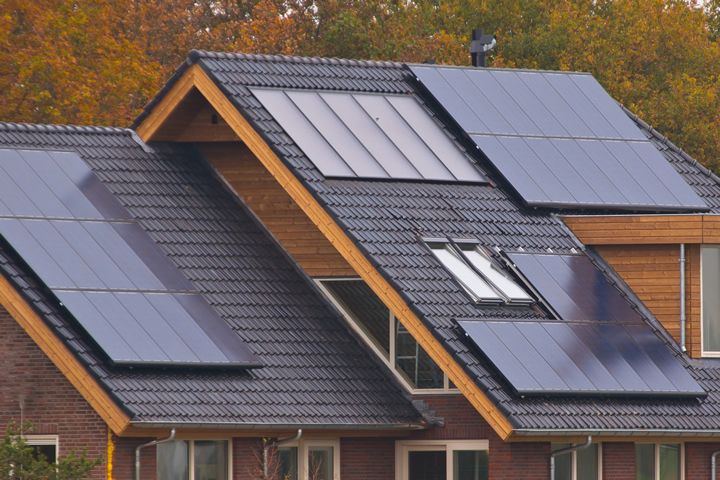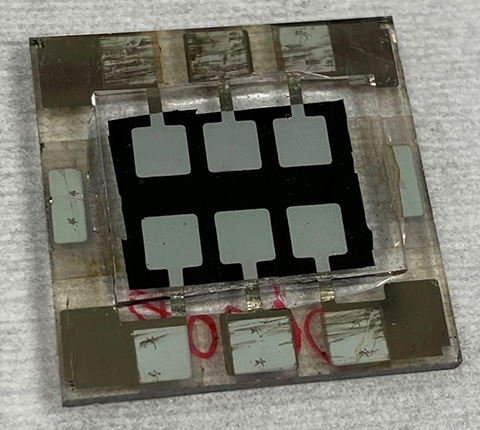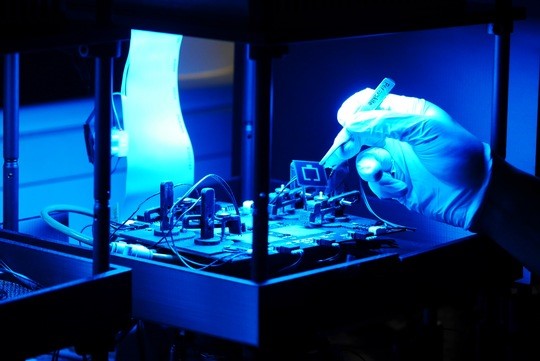Scientists crack the code to longer-lasting perovskite solar technology
While perovskite solar cells offer a cost-effective and lightweight alternative to traditional silicon-based technology, their commercial potential has been limited due to a flaw in their structure - primarily caused by iodine leakage.
UbiQD Expands Solar Innovation with Acquisition of BlueDot Photonics
By leveraging BlueDot's innovative doped perovskite materials, which convert high-energy photons into nearly twice as many lower-energy photons, this technology could increase silicon solar panel efficiency by up to 16%.
JinkoSolar's Perovskite Tandem Solar Cell Based on N-type TOPCon Sets New Record with Conversion Efficiency of 33.84%
The record-breaking perovskite tandem solar cell utilizes JinkoSolar's N-type high-efficiency monocrystalline TOPCon solar cell as the bottom cell, enhanced by significant advancements across multiple key technologies.
Making solar cells more weatherproof
In recent experiments at the Canadian Light Source (CLS) at the University of Saskatchewan (USask), Kelly, professor of chemistry at USask, and his team were trying to figure out why solar cells made with lead halide perovskite, rather than silicon, were failing prematurely.
20% more powerful tandem solar panels enter commercial use for the first time in the US
The first Oxford PV panels available on the market have a 24.5% module efficiency, offering performance significantly above traditional silicon technology. The panels are powered by perovskite-on-silicon cells.
The perovskite revolution will slash costs and increase power output in every segment of the solar industry.
A new report from Rethink Energy finds that perovskite solar modules are set to reach GW-scale manufacturing from 2028, taking over the entire industry by 2040.
NREL Researchers Highlight Opportunities for Manufacturing Perovskite Solar Panels With a Long-Term Vision
The PV research community, the article noted, is in an influential position to prioritize efforts in remanufacturing, recycling, (aka a "circular economy") and reliability to make perovskite PV among the most sustainable energy sources on the market.
Pusan National University Researchers Improve the Stability of Perovskite Solar Cells
In the presence of moisture, the perovskite tends to get corroded. Multiple approaches have been suggested to resolve this issue, including encapsulating the device and compositional engineering of the perovskite light absorbers.
Combination of Stressors Key to Testing Perovskite Solar Cells
Solar cells must endure a set of harsh conditions-often with variable combinations of changing stress factors-to judge their stability, but most researchers conduct these tests indoors with a few fixed stressing conditions.
Bifacial Perovskite Solar Cells Point to Higher Efficiency
The dual nature of a bifacial solar cell enables the capture of direct sunlight on the front and the capture of reflected sunlight on the back, allowing this type of device to outperform its monofacial counterparts.
QD Solar reports on highly efficient perovskite solar cells developed for large scale manufacturing
The 24% efficiency for spin-coated perovskites cells and the 23.2% efficiency for slot-die coated, manufacturing-ready, perovskite cells have been officially confirmed by MKS Instruments/Newport in Utah, USA.
Thin, Lightweight Layer Provides Radiation Barrier for Perovskites in Space, Protection From Elements on Earth
An ultrathin protective coating proves sufficient to protect a perovskite solar cell from the harmful effects of space and harden it against environmental factors on Earth.
Solvent study solves solar cell durability puzzle
A discovery by Rice University engineers brings efficient, stable bilayer perovskite solar cells closer to commercialization. The cells are about a micron thick, with 2D and 3D layers.
New Additives to Perovskite Tandem Solar Cells Boost Efficiency, Stability
Scientists at NREL have demonstrated a tin-lead perovskite cell that overcomes problems with stability and improves efficiency. The new cell, a tandem design with two layers of perovskites, measured a 25.5% efficiency.
Q CELLS and Helmholtz-Zentrum Berlin achieve record efficiency of 28.7% for 2-terminal perovskite-silicon tandem solar cell
The joint achievement from Q CELLS and Helmholtz-Zentrum Berlin sets a new world record for 2-terminal tandem solar cell efficiency based on perovskite top-cell technology and using a mass-production-ready silicon bottom cell based on Q.ANTUM technology.
Records 1 to 15 of 30
Featured Product

Terrasmart - Reduce Risk and Accelerate Solar Installations
We push the limits in renewable energy, focusing on innovation to drive progress. Pioneering new solutions and ground-breaking technology, and smarter ways of working to make progress for our clients and the industry.





_0.png)




.jpg)
.jpg)



